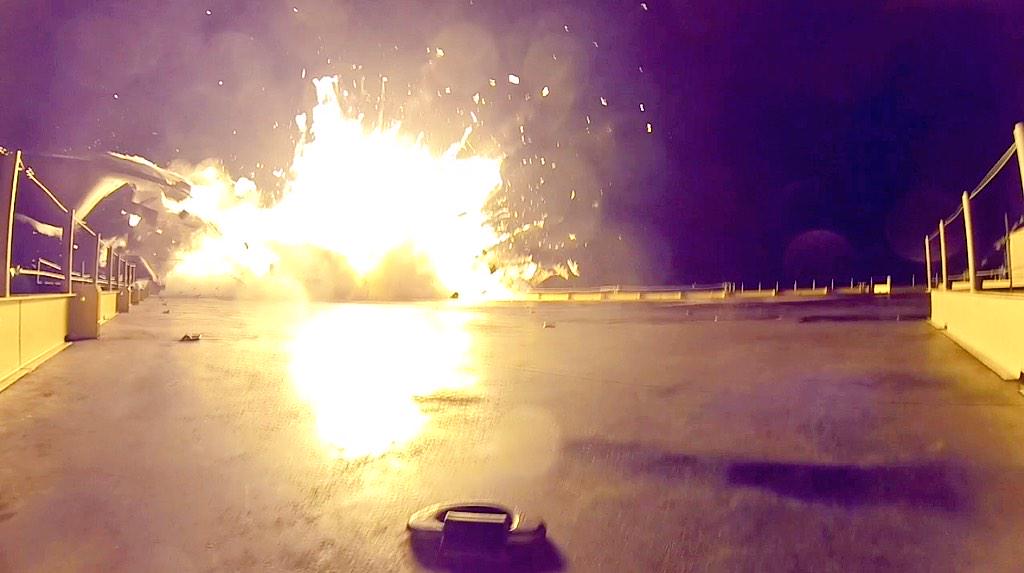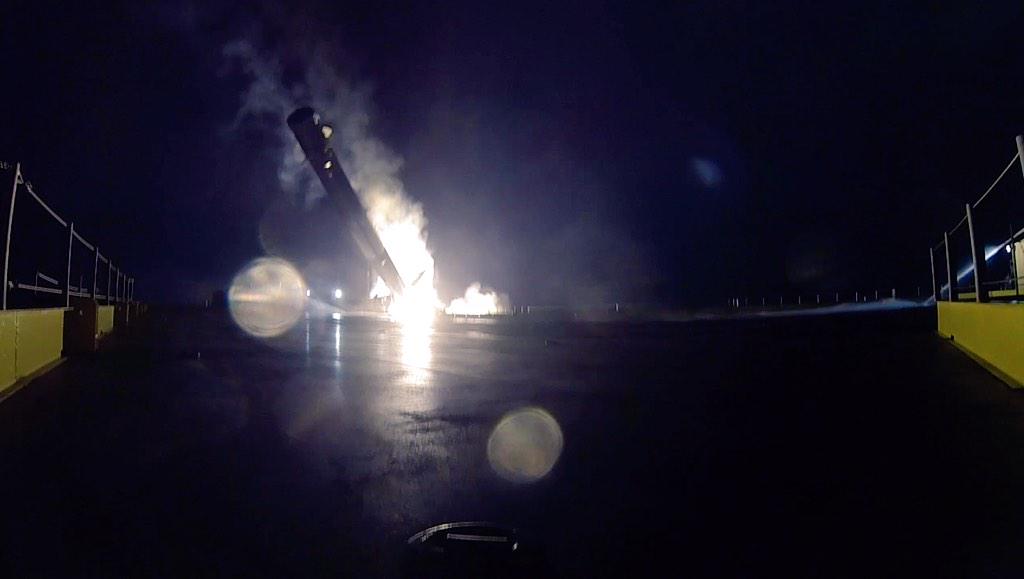See SpaceX's Rocket Landing Crash Up Close with These Photos & Video

An incredible video and series of photos show the fiery fate of a rocket stage during a reusable rocket test earlier this month.
Elon Musk — founder of the private spaceflight company SpaceX — has released a series of amazing images detailing the Jan. 10. The photos and video show the boost stage of a Falcon 9 rocket exploding as it impacts a floating drone ship in the Atlantic Ocean. The SpaceX rocket had just delivered an uncrewed Dragon capsule bound for the International Space Station to orbit before coming back to Earth in an attempt to land upright on the floating platform.
The difficult test didn't go exactly according to plan. The rocket's fins used to steer the vehicle during the test ran out of hydraulic fluid just before landing, Musk wrote in a series of Twitter posts. SpaceX's next reusability test should take place in two to three weeks and that rocket should be carrying more hydraulic fluid than the last test, Musk added today. [SpaceX's Reusable Rocket Landing Test Explained (Infographic)]
"Before impact, fins lose power and go hardover," Musk wrote in a series of tweets. "Engines fights to restore, but … Rocket hits hard at ~45 deg angle, smashing legs and engine section. Residual fuel and oxygen combine … Full RUD (rapid unscheduled disassembly) event. Ship is fine minor repairs. Exciting day! … Next rocket landing on drone ship in 2 to 3 weeks w way more hydraulic fluid. At least it shd [should] explode for a diff reason."
The new SpaceX video and photos show the Falcon 9 stage exploding in a corner of the ship. The roar of the crashing rocket can be heard in the 7-second video. Initially, SpaceX representatives didn't expect to get any imagery because of the dark conditions during landing, but these newly-released photos are still frames from video recorded on the floating platform.
SpaceX's drone ship didn't take on any serious damage, but it will need some relatively light repairs, according to Musk. The ship is a relatively small target at 300 feet long by 170 feet wide (91 by 52 meters) with its "wings" extended. The booster managed to target the platform when it was about 150 miles (240 kilometers) above the landing site.
The reusability test itself was unprecedented. SpaceX performed two soft landings with Falcon 9 stages in 2014, but both of those were directly in the water, not on a platform. Because of the difficult nature of the test, company representatives didn't predict very high odds of success.
Breaking space news, the latest updates on rocket launches, skywatching events and more!
Musk has long been interested in making reusable rockets a reality in order to dramatically reduce the cost of spaceflight.
The reusability test was not the main focus of the Saturday launch, however. The Dragon spacecraft successfully delivered its supplies to the space station as part of SpaceX's fifth official cargo mission to the orbiting outpost under a contract with NASA.
Follow Miriam Kramer @mirikramer. Follow us @Spacedotcom, Facebook and Google+. Original article on Space.com.

Miriam Kramer joined Space.com as a Staff Writer in December 2012. Since then, she has floated in weightlessness on a zero-gravity flight, felt the pull of 4-Gs in a trainer aircraft and watched rockets soar into space from Florida and Virginia. She also served as Space.com's lead space entertainment reporter, and enjoys all aspects of space news, astronomy and commercial spaceflight. Miriam has also presented space stories during live interviews with Fox News and other TV and radio outlets. She originally hails from Knoxville, Tennessee where she and her family would take trips to dark spots on the outskirts of town to watch meteor showers every year. She loves to travel and one day hopes to see the northern lights in person. Miriam is currently a space reporter with Axios, writing the Axios Space newsletter. You can follow Miriam on Twitter.



